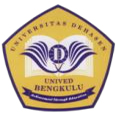| Journal Info |
| Focus and Scope |
| Section Policies |
| Editorial Board |
| Peer Reviewer |
| Open Access Policy |
| Archiving |
| Publication Ethics |
| Publication Workflow |
| Article Indexing |
| Author Information |
| Author Guidelines |
| Article Processing Charge |
| Copyright Notice |
| Plagiarism Scanning |
| Online Submission |
| Publisher |
|
UNIVED Bengkulu |







